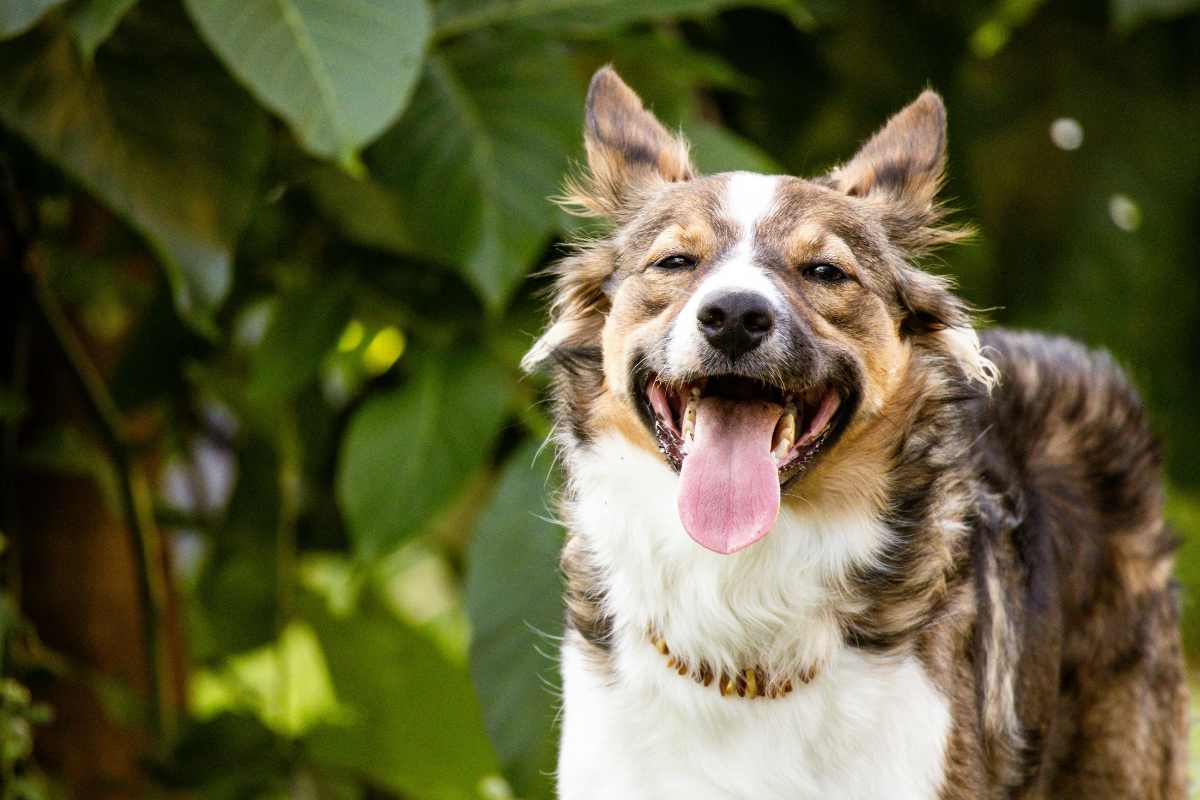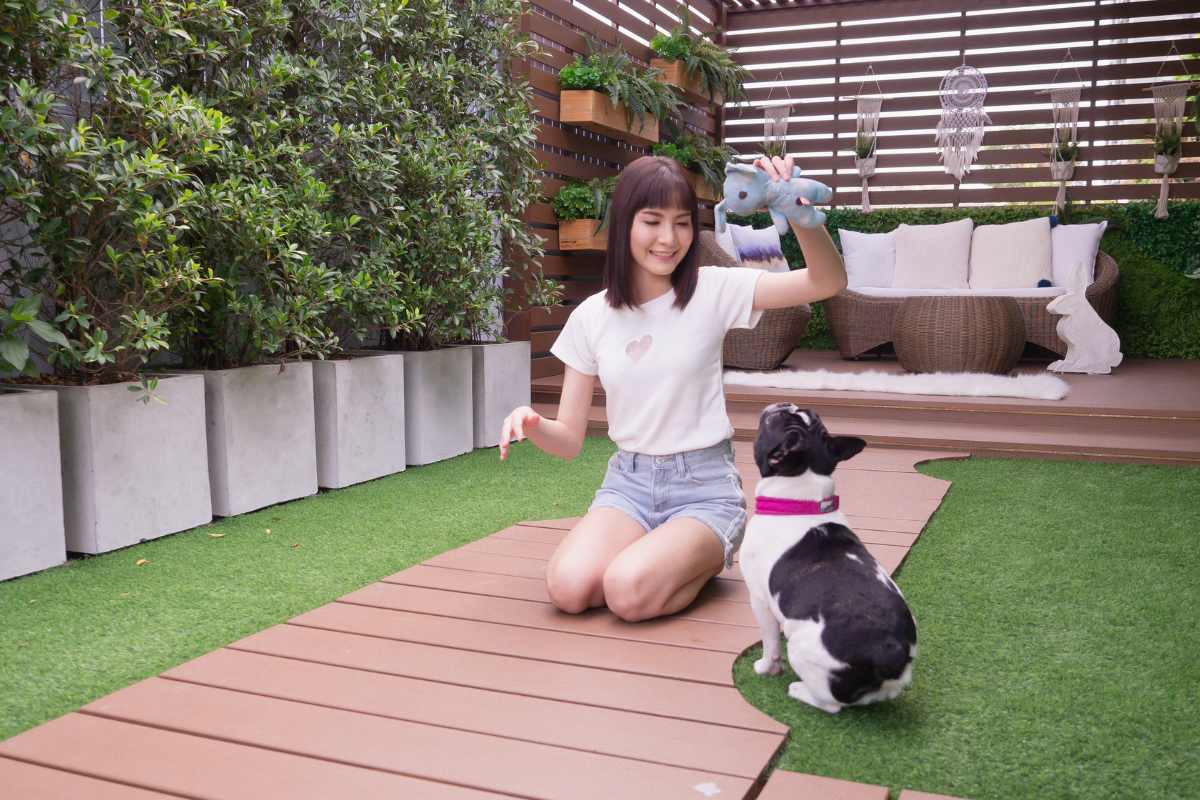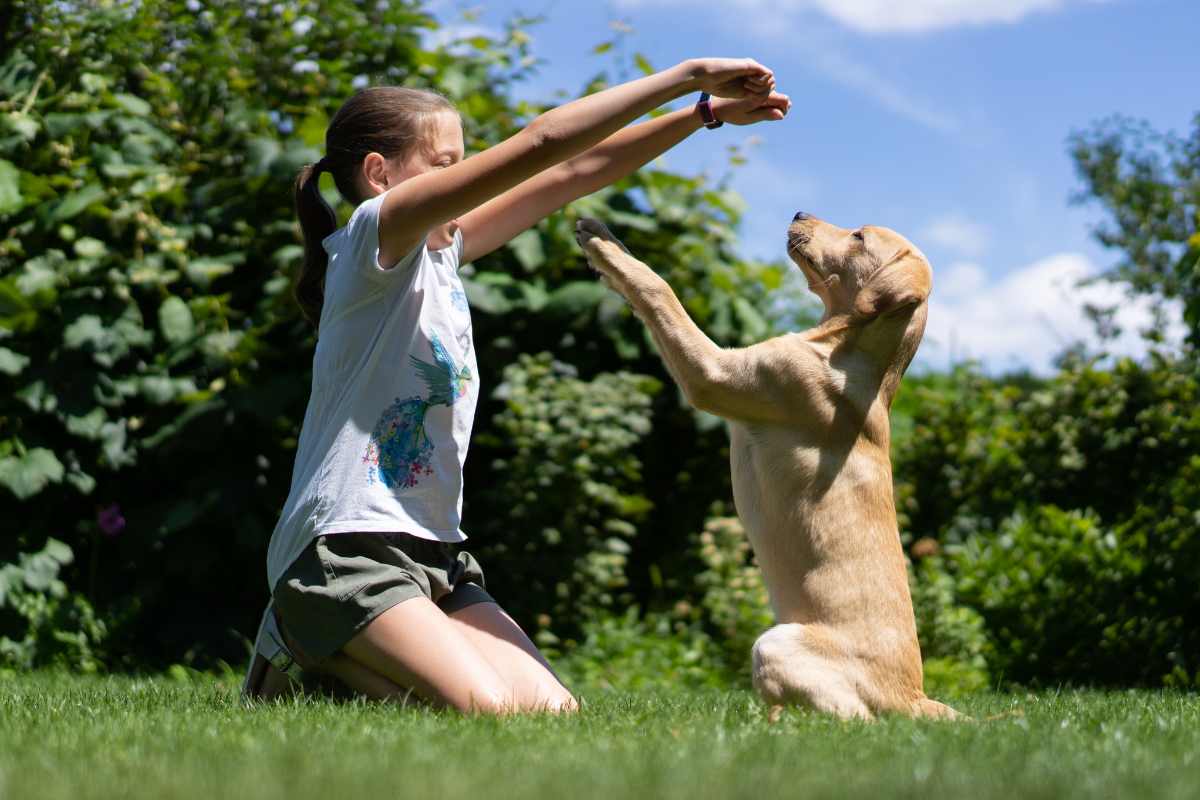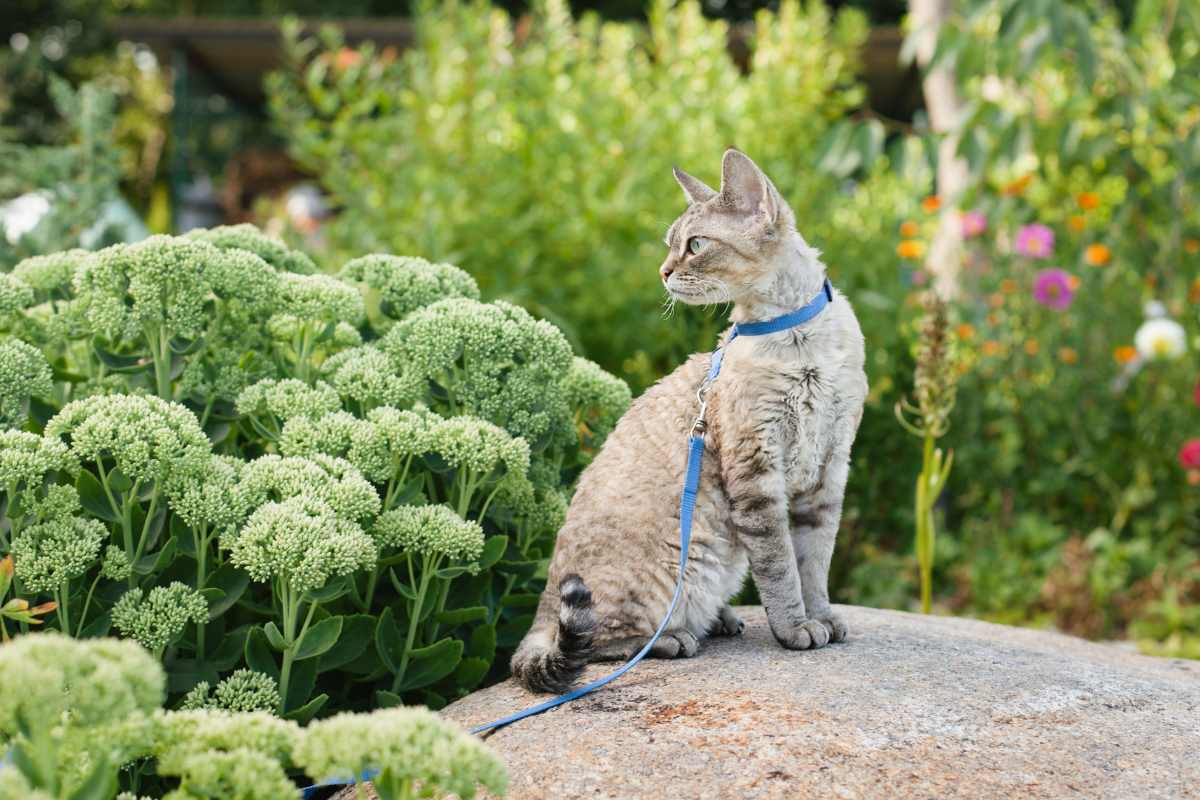How to Create a Sensory Garden for Pets

A sensory garden for pets turns everyday outdoor (or indoor!) space into a safe playground that stimulates smell, sight, touch, taste, and sound.
The result? Happier, calmer, more engaged pets that explore, sniff, and play with purpose.
30-second summary:
Goal: Offer varied, pet-safe experiences that reduce boredom and stress.
Setup basics: Mix textures, aromas, visual layers, mild sounds, and edible plants in clearly zoned areas.
Safety first: Choose non-toxic plants, introduce changes gradually, and supervise the first 72 hours.
Safe & Accessible Design (Make it actionable)

Build your garden around comfort and control.
Pathways: Aim for 60–90 cm wide so a medium dog can turn comfortably. Keep edges soft (mulch, groundcover).
Raised beds: 20–30 cm tall for small dogs, seniors, or cats that prefer elevated sniffing platforms.
Textures (balanced mix): ~40% tough lawn, 30% soft mulch, 20% rounded pea gravel, 10% damp/soft zones (mossy mats, cooling pads).
Water features: Shallow bowls or rills ≤15 cm deep; add escape ramps. Avoid algae and change water frequently.
Fences & borders: Low, rounded borders to suggest boundaries without trapping whiskers or paws.
Noise sensitivity: If your pet startles easily, favor water trickles and rustling grasses over chimes.
The Five Senses—Build Each Zone with Purpose

Smell (Olfactory exploration)
Use aromatic, pet-safe plants and rotating scent objects to encourage natural foraging.
Ideas: Catnip, cat grass, valerian (for cats); chamomile, lavender (for many dogs), mint in containers (to control spread).
Try this today: Tuck a few herb planters at nose height near a calm seating spot and swap one scent weekly.
Sight (Visual interest without overwhelm)
Create layers (low groundcovers, mid-height shrubs, a small trellis) so pets can peek, perch, and patrol.
Ideas: Variegated foliage, grasses that sway, visual corridors to watch the world safely.
Try this today: Add a cat shelf or dog lookout (sturdy platform) that overlooks a low-traffic view.
Touch (Tactile variety under paw and whisker)

Offer a texture runway: mulch, smooth stepping stones, short turf, and a small gravel patch with rounded pebbles.
Avoid sharp gravel. Include cool zones (shade, damp mats) for hot days.
Try this today: Lay a 1–2 m tactile strip from the door to a favorite spot so pets start engaging immediately.
Taste (Edible enrichment)
A pet-safe nibble corner reduces boredom and channels chewing.
Dogs: Parsley, basil, blueberries (shrub), wheatgrass.
Cats: Cat grass, catnip, lemon balm (some enjoy).
Rabbits/guinea pigs: Dandelion greens, plantain (Plantago), fennel fronds, herb rosettes (always verify non-toxicity).
Try this today: Pot a triad of herbs and rotate which is reachable each week to keep it novel.
Sound (Calming, not startling)
Think gentle soundscapes: trickling water, wind through ornamental grasses.
Skip loud chimes for noise-sensitive pets; introduce any new sound gradually.
Try this today: Place a small bubbler near the seating area; monitor your pet’s reaction and adjust flow.
Plant Picks by Climate (Always verify pet-safety)

Aim for 6–8 options that thrive where you live and are commonly regarded as non-toxic to pets. Place edibles in dedicated zones and supervise early on.
Temperate
Cat grass, catnip, calendula, chamomile, blueberry, thyme, wheatgrass, fescue turf.
Tip: Use mulch paths to reduce mud and protect joints.
Mediterranean
Lavender (mild, monitor individual tolerance), rosemary, oregano, sage, strawberry, santolina, hardy thyme, feathery grasses.
Tip: Group drought-tolerant herbs for low-maintenance aroma.
Subtropical/Tropical
Basil, lemongrass, pineapple sage, sweet potato vine (ornamental; supervise), banana (ornamental shade), mint (contained), marigold, peperomia (as filler).
Tip: Provide shade sails and morning sun access for comfort.
Always cross-check toxic/irritant lists for your species before planting. When in doubt, container-garden and observe.
Mini-Guides by Species (Fast, practical notes)

Dogs
Design: Wider paths, sturdy edging, scent lanes at nose height.
Joints: Favor mulch and turf over hard stone for seniors.
Enrichment: Snuffle beds (low herb mats) and hide-and-seek scented pouches.
Cats
Design: Vertical variety (perches, shelves), hidey shrubs for ambush play, soft landing zones.
Enrichment: Catnip and valerian patches; add visual lookouts with partial cover.
Litter logic: Keep gritty zones away from edible planters.
Rabbits & Guinea Pigs (supervised, secure)
Design: Fully fenced micro-runs, shade tunnels, soft turf/mats.
Forage: Safe broadleaf “salad bar” planters; avoid sudden diet changes.
Chew: Provide untreated willow or safe chew branches apart from garden stems.
Small Spaces & Indoor Corners

No yard? Create balcony or indoor sensory spots.
Balcony: Rail planters with herbs, a tactile tray (mulch/pebbles/mat), and a shade screen.
Indoors: Planter cart with cat grass and herbs, a circulating water bowl, and a texture mat zone.
Rotation rule: Swap one plant or texture weekly to keep novelty high.
Seasonal Care (Quick calendar)
Q1 (Early growth): Plant, check fencing, refresh paths.
Q2 (Active use): Pet-safe pest control, trim herbs, renew mulch.
Q3 (Heat): Add shade cloth, extra water stations, monitor hot surfaces.
Q4 (Reset): Prune, replace worn textures, sanitize water features.
Two-Week Progress Checklist (Print & use)

Track small wins and adjust based on your pet’s feedback.
Daily (✓):
Minutes of sniffing/exploring (goal: +5–10 min by week 2)
Calm time after outdoor session (goal: settles faster)
Interest in new scent/texture (yes/no)
Water intake and comfort in hot weather
End of Week 1: Swap one scent plant or texture; note any stress signs (avoid that stimulus).
End of Week 2: Compare logs. If exploration rose and restlessness dropped, you’re on track. If not, simplify: fewer stimuli, more shade, shorter sessions.
Quick Safety Reminders
Depth matters: Keep any open water ≤15 cm for puppies, brachycephalic dogs, or small pets.
Gravel choice: Only rounded pea gravel; avoid sharp edges that can irritate paw pads.
First 72 hours: Supervise closely, especially with new plants or sounds.
Edibles: Offer in dedicated containers; rotate and monitor stool/behavior.
Pesticides & fertilizers: Use pet-safe options exclusively.
FAQ

Which aromatic plants are safest to start with for cats?
Cat grass and catnip are classics. Some cats also enjoy valerian and lemon balm. Offer small amounts, observe reactions, and keep non-cat edibles out of reach.
Can I make a sensory garden on a tiny balcony?
Yes—use stacked planters, a tactile tray, and a shallow bubbler bowl. Provide shade and rotate one element weekly for novelty.
How do I know it’s working?
You’ll likely see more purposeful sniffing, longer, calmer rest post-play, and less destructive boredom. If your pet seems tense, reduce stimuli and re-introduce slowly.
Do I need special soil or lighting?
Not necessarily. Choose soil that suits your herbs, ensure drainage, and aim for morning sun + afternoon shade in hot climates. Indoors, add a small grow light for edible pots.
Your First Step Today

Pick one zone—smell, touch, or sound—and make a 10-minute upgrade: add a cat-height herb planter, lay a 1-meter texture strip, or set a gentle water bubbler.
Keep it pet-safe, observe for 72 hours, then build from there. With a few thoughtful tweaks, your pet-friendly sensory garden can become the most relaxing, enriching corner of your home.
Pro tip: Save this page and print the two-week checklist. Small, consistent changes beat big weekend overhauls—especially for sensitive pets.
Enjoy The Video About Pets

Source: Yorkshire Post
Did you find this post useful or inspiring? Save THIS PIN to your Pets Board on Pinterest!


You may also like